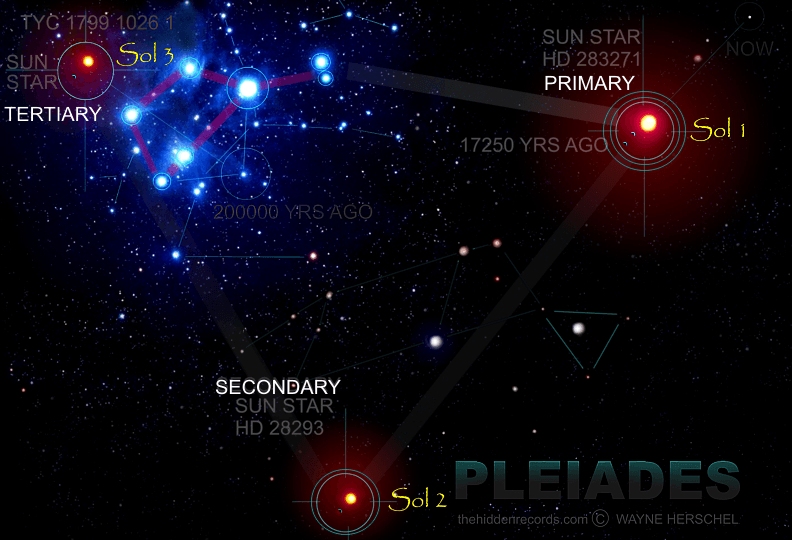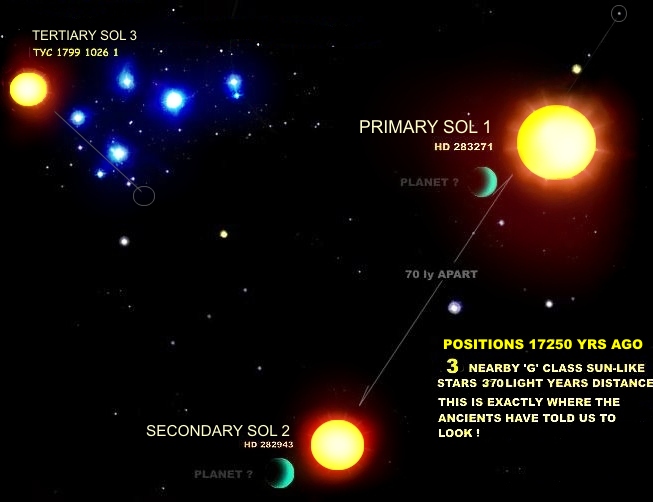As already mentioned, the position of the Sun between the bull’s
horns near the crossing place of the Sun and the Milky Way (often seen with the Apis bull in ancient Egypt) poses an
obvious mismatch by distance and size when compared to the collective
examples of the repeating cosmic pattern of the ancients. This
being the case, then why did the ancient Egyptians sometimes portray
the ‘solar disc’ between the horns of the celestial
bull?
The answer is simple.
In my book, ‘The Hidden Records, I
debate this interpretation and in summary here are the important
factors to consider.
The Pleiades and the Sun-like star (that I believe was significant
to the ancients), are found directly behind the horns and neck
of the celestial bull of the sky. On a practical level, when carving
a statue, a convenient place the solar disc could be incorporated,
would be for it to be wedged firmly between the horns. It would
seem murals inadvertently emulated this portrayal.
Be that as it may, there is very early evidence at the Temple
of Hathor in Dendera of the solar disc being placed correctly
in the ‘sacred’ position in the nape of the neck of
the celestial bull and not the horns (as in the case of the earliest
ancient Egyptian relic… the Narmer tablet discussed in
the book). This is exactly where the Pleiades and the Sun-like
star are found in the night sky.
Click here... Taurus star map.













